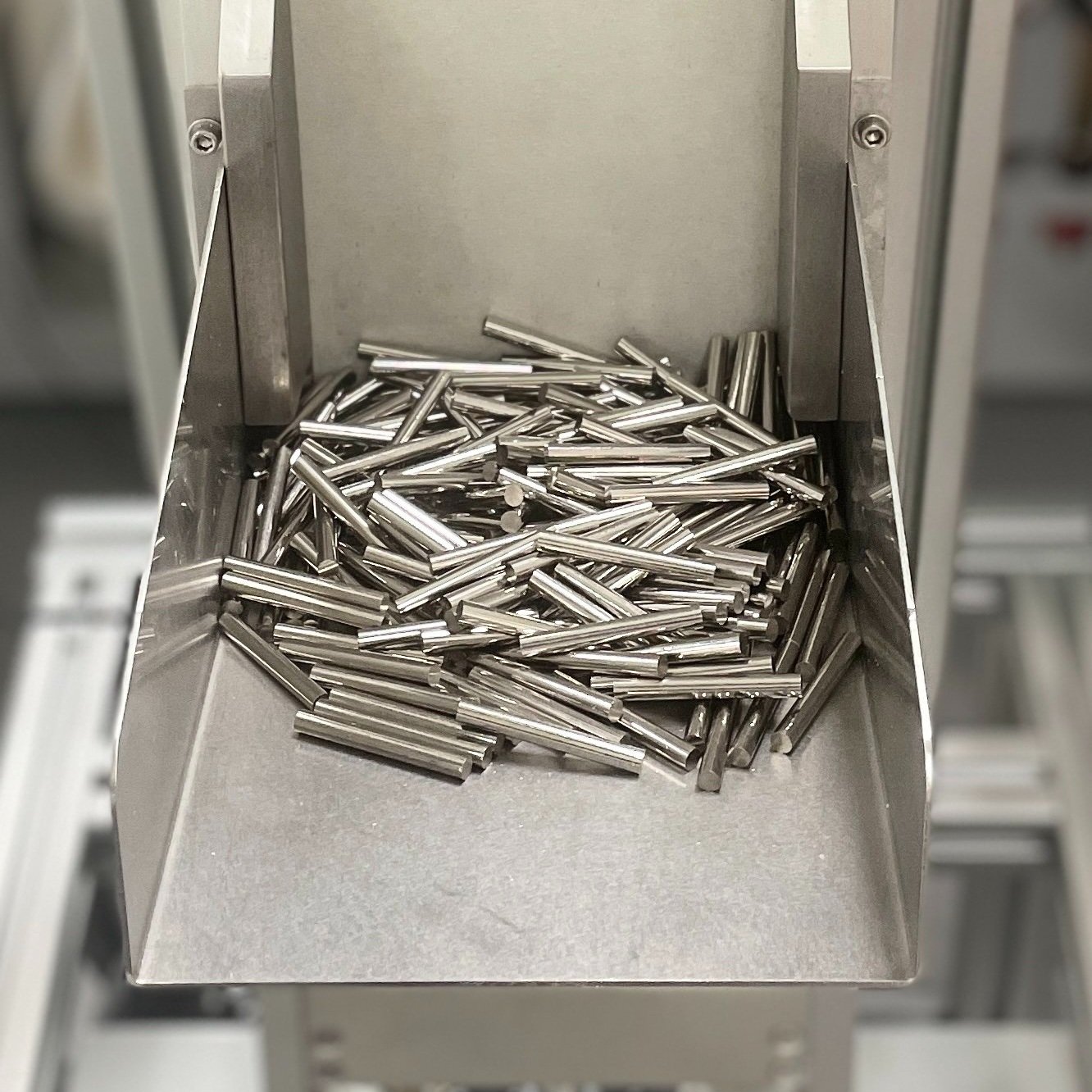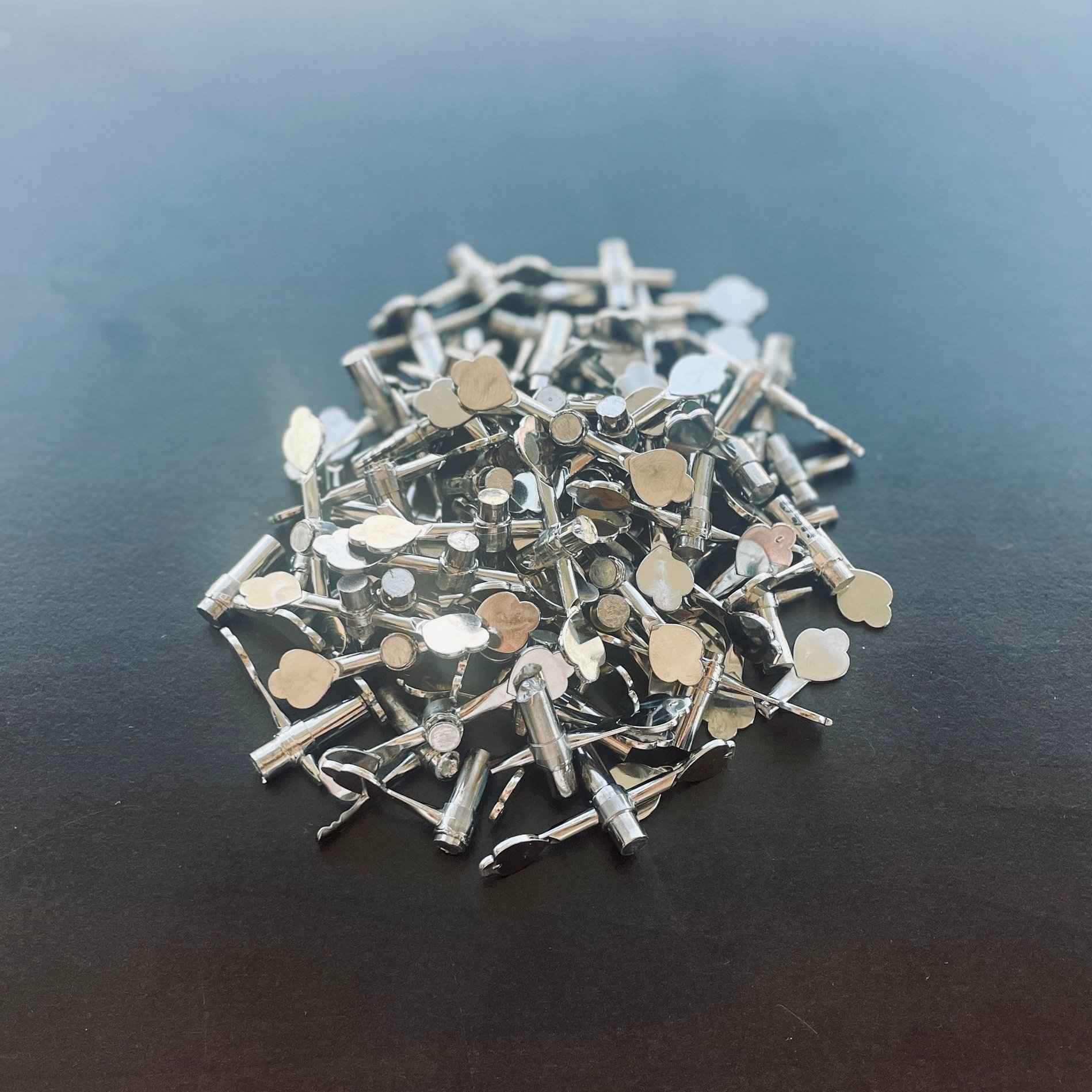Our Platform
Rapid Discharge Forming (RDF) is a revolutionary manufacturing platform utilizing metallic glass, as opposed to conventional metals, to produce precision net-shaped metal hardware in a single step.
Innovative Manufacturing
Ultra-rapid, precision electrical heating
Room temperature operation
Open air processing
All electronic platform
Robotic automation
20-second cycle time
Compelling Sustainability
✘ No furnaces, insulation, hot machinery
✘ No vacuum pumps, seals, inert gases
✘ No powders, turnings, solvents, lubricants
✓ Software controlled process, fully automated production, reduced labor intensity
✓ Ultra-rapid processing, unparalleled throughput, reduced machinery infrastructure
✓ Clean technology, reduced carbon footprint, sustainable manufacturing
Arburg
Allrounder 370H/
RDF
Glassimetal’s commercial manufacturing platform is developed by Arburg. A 60-ton production machine is designed and built on the industrial Arburg Allrounder 370H frame. It features Arburg advanced hydraulic drive technology and an electrically integrated discharge power supply programmed to deliver synchronized precision RDF heating pulses and injection strokes. Equipped with Arburg Multilift linear robotic technology, the Allrounder 370H/RDF operates in fully-automated mode with a cycle time of 20 seconds.
Unique Processability
Glassimetal's RDF technology is the only one of its kind, capable of producing hardware with service strength many times greater than steel with the manufacturing economics of plastics injection molding.
Unlike conventional metals, metallic glass has thermoplastic processability similar to plastics and 100 times higher service strength
In contrast to metal injection molding (MIM), where metal powder is mixed with a plastic binder to facilitate flow, RDF enables direct thermoplastic shaping of the metallic glass as done in plastics technology
Light Bulb Concept
How the magic works!
A rapid discharge of electrical current instantaneously heats the metallic glass
The metallic glass rapidly attains the fluidity of honey
An applied force drives the viscous metallic glass into a mold where it is shaped into a desired part
Conduction to the surrounding mold renders the shaped part amorphous
Molding Cycle
Loading
An amorphous feedstock is loaded into a barrel connected to the mold cavity. The mold is closed and a clamping force (Fm) is applied. The feedstock makes electrical contact with two electrodes that approach it axially on either end. This contact is maintained by application of contact force (Fc).
Heating
The electrodes are connected to a capacitor bank storing sufficient electrical energy to heat the feedstock to a unique “softening” temperature ideal for molding. A current pulse with a peak between 10 to 20 kA is discharged through the feedstock heating the material to its softening temperature in 20-30 ms.
Injection
One electrode - also serving as a plunger - drives the softened feedstock through a gate and into the mold cavity. The entire injection process takes 50-100 ms.
Cooling
Once the injection stroke is complete, a packing force (Fp) is maintained by the plunger as the material cools in the mold. The cooling rate in the mold depends on the part geometry, and should be fast enough to ensure the material solidifies in the amorphous state. Typical cooling times range between 0.5 to 5 seconds.
Ejection
Once the part has cooled, the mold is opened and the part is ejected.
Setup
Subsequently, the electrodes are repositioned to accept a new feedstock, while the capacitor bank is recharged for the next molding cycle.









